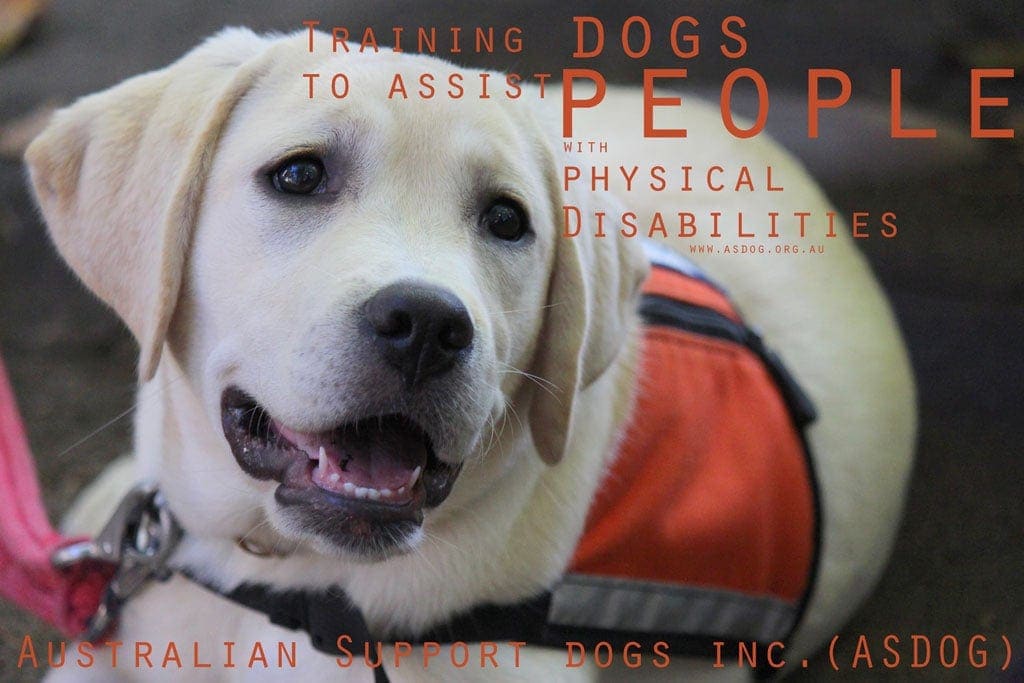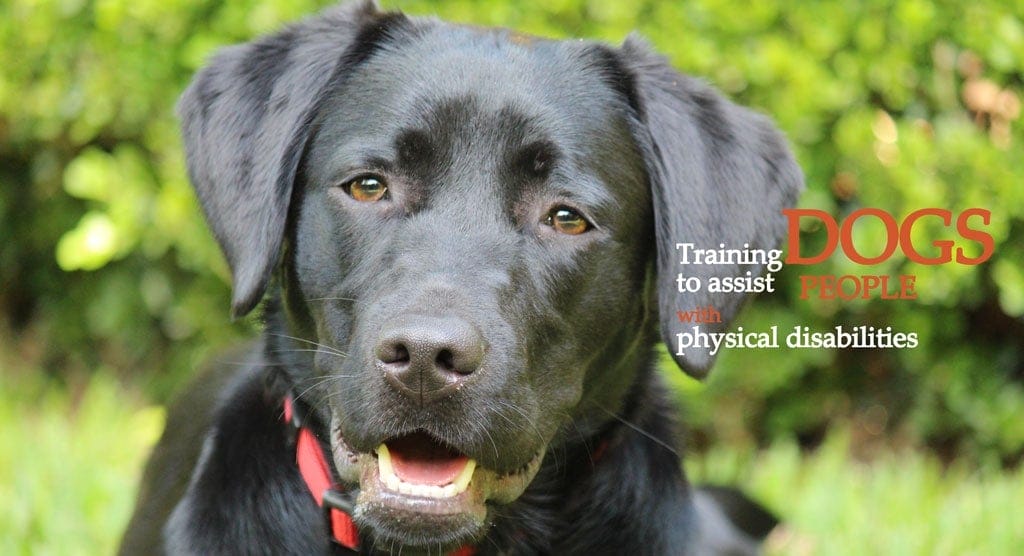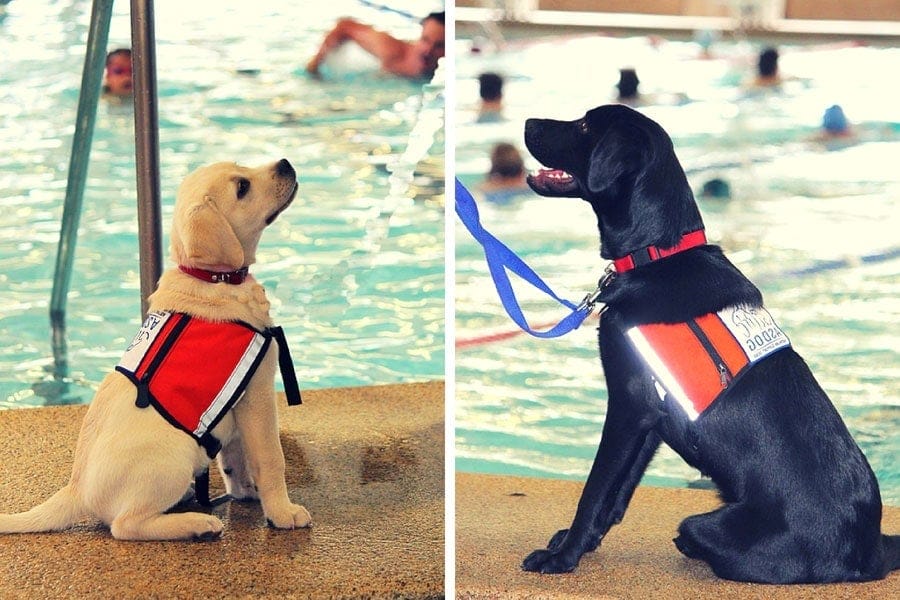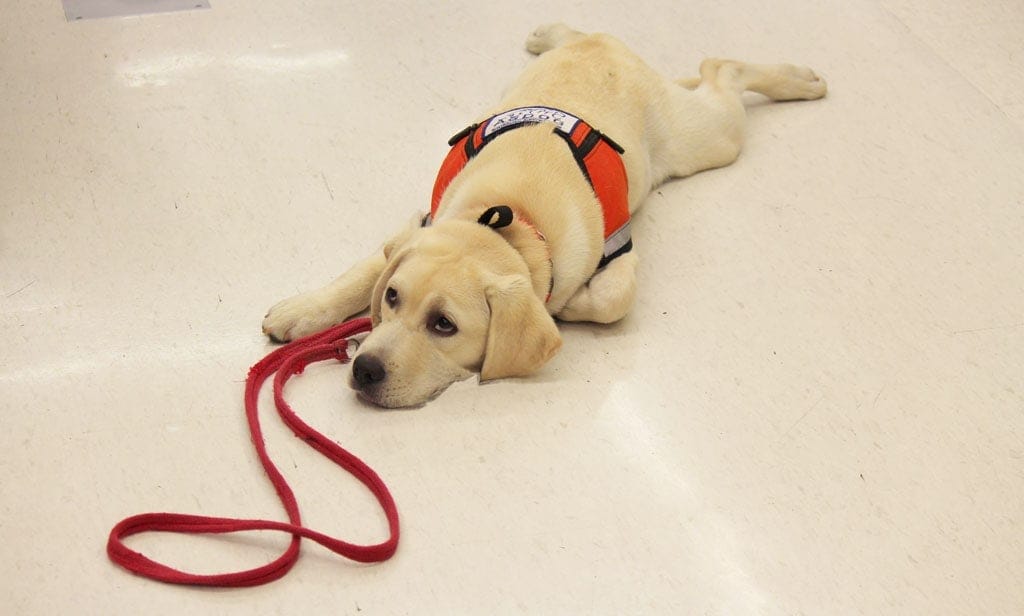In recent weeks Guide Dogs NSW have launched a statewide campaign called ‘Take the lead‘ which is aimed at educating dog owners on the importance of keeping their pooch under control when in the company of a working guide dog. Research has shown that one in two guide dogs have experienced an off-leash dog attack while guiding their vision-impaired handler in public spaces in NSW and ACT.
Guide Dogs and their trainers are not the only ones that rely on the support of the public to ensure that their dogs feel safe when working in public spaces, especially during the early training years. In this article I am going to discuss how Australian Support Dogs (ASDOG) also need the same space and respect when ‘at work’ with some tips on how you can easily learn to keep control of your dog.
I have had the pleasure of taking on a gorgeous ASDOG, Jenna, to train for the next 12 months. ASDOG is a not for profit organisation committed to raising and training accredited assistance dogs to be placed with people with physical disabilities.

I have been working with Jenna for the past two months and have been fortunate enough to meet so many wonderful and supportive members of the public wanting to know everything that there is to know about Jenna and ASDOG. This community support allows us to work with our dogs in busy places in order to prepare them for accreditation. The places that we visit on a regular basis include shopping centres, grocery stores, buses and trains, restaurants, cafes, universities and more.
I have experienced a couple of incidents where Jenna has been charged at and/or attacked by other dogs whilst walking past off leash areas, and even on the street. In both scenarios the owners of the dogs did not seem to have control of their dogs. Charging and being attacked can have profoundly negative impacts, such as stress, anxiety and reactive responses towards other dogs.

These experiences can set assistance dogs back to the point where they may not pass the test required to certify them. These dogs not only need to feel safe and secure whilst undergoing training, they also need to learn to stay focused on their handler when sharing public spaces with pet dogs.
Here are a few things that you can do to help support assistance dogs in training or when they are with their recipients in public spaces.
Human interaction
- An ASDOG in training can be identified by a bright orange vest with the ASDOG logo on the side. When you see an assistance dog wearing a vest, this means that they are working. Approaching them when they are working may distract them from focusing on a training task. Therefore it is important to always ask the trainer for permission to pat the dog. Please do not be offended if the trainer says no, there is usually a good reason for it.
- Always talk to the handler, not the dog. If the handler is unable to answer your questions it is probably because they need to focus on training their assistance dog.
- Please do not feed an assistance dog. ASDOG trainers use positive reinforcement training (PDF) methods to train their dogs, which means that they are rewarded with food when out on the streets training. All of the dogs are on strict feeding schedules and should only be fed by the handler.
What to do when you are walking your dog
The best thing that you can do when you come across an assistance dog on the street is to keep your dog under control. Try not to approach the trainer and the assistance dog. When other dogs interact with working assistance dogs it is extremely hard for them to stay focused on their trainer.
Footpath etiquette
Assistance dogs are trained to walk on one side of a wheelchair at a time. So when we train them to walk on leash we work on getting them to walk on one side for a period of time and then swap to the other side for a period of time. This is so that they do not get into the habit of traversing to the other side of the path, which prepares them for walking safely next to a wheelchair.
- If you are walking along the street and see an assistance dog walking towards you, make sure that your dog is on the opposite side to the assistance dog. This also applies if you need to takeover an assistance dog when coming up from behind.
- If you feel that your dog is not capable of walking past another dog without interaction, then it is probably best to cross the street to allow the assistance dog and trainer to walk along the street without distractions.
- Make sure that you do not stop, just keep walking. By doing this the assistance dog in training will become used to walking past other dogs without having to interact with them.

Training tips
- Take treats with you on your walks to gain your dog’s focus when walking past other dogs. Asking for a “look” response when walking past can divert your dog’s attention to you instead of the dog that is walking past. This is where you get your dog to look up at your face when you say the verbal cue “look”.
- Teach the “look” response at home first, before using it in more distracting environments.
- Make sure the treats you use actually motivate your dog to train in distracting environments. What works at home may not be tempting enough to distract your dog in environments where you are competing with high stimulus such as other dogs, cats, and more. Cooked chicken works a treat!
Off leash etiquette
If your dog is off leash and approaches an assistance dog in training, it is important that you are able to recall your dog back to you so that your dog does not distract the assistance dog. Trying to keep an assistance dog calm and focused when a dog is running towards it off leash is probably one of the most challenging training tasks to accomplish.

Recall training tips
- Use high value treats (cooked chicken) when recalling your dog at the park. Make sure that you reward your dog with that treat every time your dog comes to you so that it associates you calling it with receiving a yummy treat.
- I look at recalling my dogs as more of a ‘checking in’ system. When I recall them and they come to me, I reward them with that special treat and then let them ‘be free’. This allows them to choose to sniff and interact with other dogs, or stay by me. If they stay by me I will reinforce this to let them know that they are doing a great job.
- I randomly clip the leash on, then unclip it and let them ‘be free’, so they cannot predict when it is time to go home. This should prevent your dog from developing a negative association towards the recall if, in the past, you have only used the recall to clip the leash on and take your dog home.
- If you have overused the word ‘come’ and your dog chooses to ignore you instead of coming to you, then change the word to something else when retraining your dog to come to you. “Here”, or using the name of the treat that you are using such as ‘chicken’ can help.
Having control of your dog in public spaces will not only help an assistance dog feel safe and confident whilst walking past your dog, but it is also the best way to promote responsible dog ownership in your community. Attending group training classes or booking a private session with a positive reinforcement trainer always helps.

Michelle O’Brien
Michelle started her career at the age of 14 as an Animal Attendant and in her early 20’s became a Veterinary Nurse. Her dog training career started 12 years ago when she was offered the opportunity to run puppy preschool classes.
Michelle’s training qualifications centre around positive reinforcement methods, being a Delta Canine Good Citizen Trainer and gaining a Certificate IV in Companion Animal Services. Michelle is also a member of the Delta Professional Dog Trainers Association.


